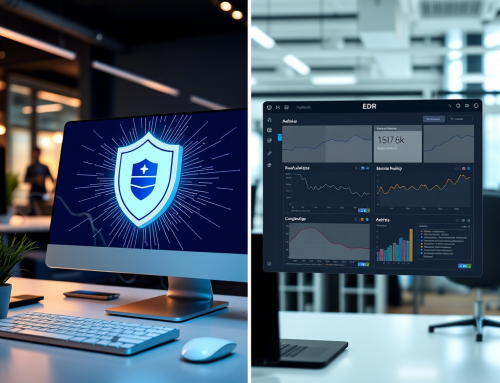With technology woven into every aspect of our daily lives, protecting yourself from cyber threats is more crucial than ever. Hackers are constantly developing new methods to exploit vulnerabilities, targeting unsuspecting individuals and their devices. This guide highlights common security risks and provides actionable steps to safeguard your personal information and digital life.
1. Man-in-the-Middle Attacks via Fake Wi-Fi Networks
Connecting to public Wi-Fi in places like cafes or airports can expose you to man-in-the-middle attacks. Hackers create fake Wi-Fi networks mimicking legitimate ones, intercepting the data you send and receive. This could include sensitive information like your passwords and browsing history.
How to Protect Yourself:
- Avoid using public Wi-Fi networks unless absolutely necessary.
- Use a Virtual Private Network (VPN) to encrypt your internet traffic, making it unreadable to cybercriminals.
2. The Dangers of Zero-Click Attacks
Zero-click attacks enable hackers to access your devices without requiring you to click or interact with anything. These attacks exploit vulnerabilities in your system to silently compromise your device, granting the attacker full access to your data.
How to Protect Yourself:
- Regularly update your phone’s operating system to address security vulnerabilities.
- Be cautious about downloading apps or software that demand excessive permissions.
3. RFID Skimming and Contactless Payment Risks
Contactless payments are convenient, but they come with risks. Hackers can use RFID readers to easily steal your credit card information, simply by being in proximity to your wallet.
How to Protect Yourself:
- Use an RFID-blocking wallet to prevent unauthorized access to your card details.
- Alternatively, wrap your cards in aluminum foil to block RFID signals.
4. Hacking Car Key Fobs
Your car keys aren’t as secure as you might think. Hackers can intercept and replicate the rolling codes used by modern key fobs, giving them the ability to unlock your vehicle remotely at any time.
How to Protect Yourself:
- Use a key fob with built-in RFID shielding.
- Store your key fob in a metal box or pouch to block signals when not in use.
5. Exploiting Wireless Devices
Hackers often target wireless peripherals like keyboards and mice. By using specialized technology, they can remotely take control of these devices, posing a significant security risk.
How to Protect Yourself:
- Opt for wired keyboards and mice when working on sensitive tasks.
- If you prefer wireless devices, choose models with robust encryption features to deter interception.
6. The Risk of IoT Devices in Your Home
From smart refrigerators to internet-connected vacuum cleaners, IoT (Internet of Things) devices are becoming a household norm. However, these devices can act as pathways for hackers to access your home network.
How to Protect Yourself:
- Be selective about the IoT devices you bring into your home.
- Disconnect or isolate unnecessary devices from your main internet network.
7. Outdated Software is a Major Risk
Outdated software is one of the most easily exploited vulnerabilities. Hackers continuously search for older systems to infiltrate, where known vulnerabilities are not yet patched by updates.
How to Protect Yourself:
- Regularly check for and install updates on all your devices, including smartphones, laptops, and tablets.
- Enable automatic updates wherever possible to ensure your system is always secure.
8. General Cyber Hygiene Tips
The fundamentals of good cybersecurity go beyond protecting against specific exploits. By adopting these habits, you can strengthen your overall security.
Key Tips:
- Use a Password Manager: Choose a reliable password manager to generate and store strong, unique passwords for all your accounts.
- Install Antivirus Software: Protect your devices against malware and other threats by keeping antivirus software up to date.
- Be Cautious Online: Avoid clicking on unsolicited emails, suspicious links, or visiting unsecured websites.
- Stay Updated: Follow trusted cybersecurity blogs and news outlets to stay informed about emerging threats and protection strategies.
Final Thoughts
While cyber threats are an ongoing challenge, proactive measures and good security practices can significantly reduce your risk of falling victim to online attacks. By staying vigilant, keeping your software updated, and using tools like VPNs, RFID blockers, and password managers, you can create a secure digital environment for yourself and your family.





